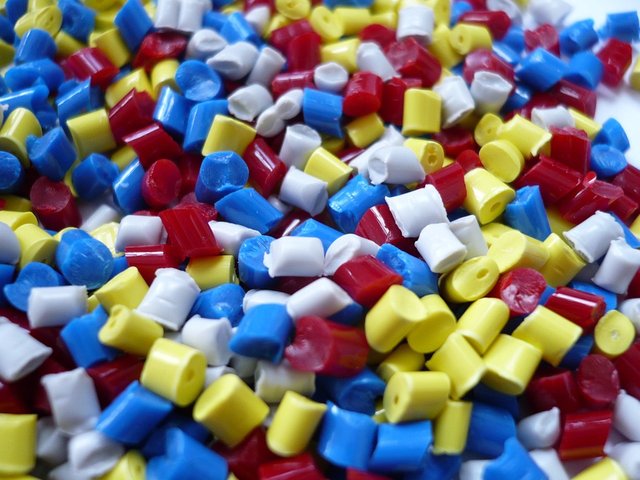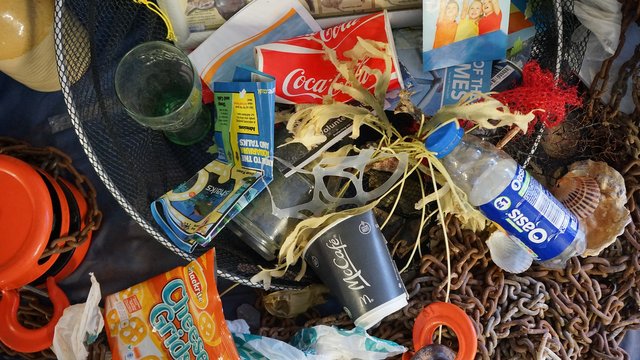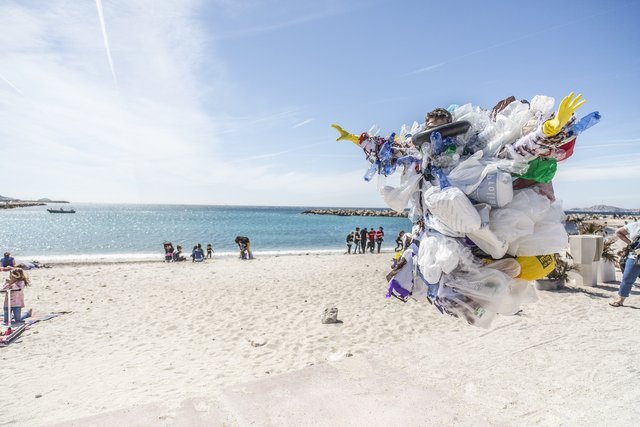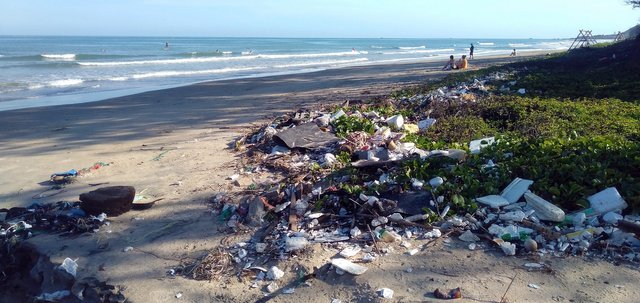Plastic - What is plastic? Why we use Plastic? Plastic consumption. (ENG)
Hello Steemians!
Todays we have a look in Plastic gernally.
We will answer questions such as what is plastic or what is it used for.
First of all, what is Plastic?

Synthetic plastics are made from oil, coal and natural gas. The most common raw material is raw gasoline, which is broken down and converted in a thermal cracking process into ethylene, propylene, butylene and other hydrocarbon compounds. They are then combined into large molecules, i.e. into a plastic, by chemical reactions. Subsequently, additives, so-called “additives”, such as plasticizers, colorants and flame retardants are added to the plastic in order to achieve the desired properties of the material.
What is plastic used for?

Worldwide, plastic production has increased twentyfold since the 1960s, from 15 to 322 million tons in 2015, and the trend is rising. Production is expected to continue to grow rapidly and to triple by 2050. Then it would make up about 20% of the world's annual oil consumption.
In Europe, 40 percent of plastic is used in the packaging industry, 20 percent in construction, nine percent in the automotive and six percent in the electronics industry.
But plastic is not just plastic, there are different types of plastic with different properties. What type it is can be read using a code that can be found on many products.
Plastic consumption

8,300 billion tons of plastic have been produced since the 1950s. The demand for plastics in Austria was 1.03 million tons in 2015, about a third of which was used for packaging. Not an insignificant amount, considering how light plastic packaging is and how short it is used.
Western Europeans and Americans consume a whopping 100 kilograms of plastic per capita per year on average, in Asia it is “only” 20 kilograms, and the trend is rising rapidly.
Not quite a third (28%) of the plastic waste generated in Austria (approx. 0.92 million tons) is recycled, the rest is simply incinerated.
When plastic gets into the environment ...

Some plastic pollution is unmistakable, think, for example, of the five giant plastic swirls that float in our oceans. The plastic follows the ocean currents and forms gigantic plastic islands. Another increasingly recognized problem is microplastics in nature. Microplastics are not only detected in the oceans, but now also in the most remote areas such as the Arctic or in Swiss mountain regions.
Since plastic pollution is a worldwide problem that can only be solved in a large context, GLOBAL 2000 has joined the international #breakfreefromplastic alliance. Together with over 1,000 other organizations and groups, we are committed to a world free from plastic pollution. To achieve this goal, less plastic has to be produced - for example, increasing the recycling rate alone will not be enough. What we need are systemic changes and holistic measures across the entire value chain. Their motto should be: “Prevention is better than healing.
This is a very informative and insightful text. Reducing the usage of plastics is a small but important part of the climate transformation. Plastic is not fantastic as it used to be seen in the 1960s